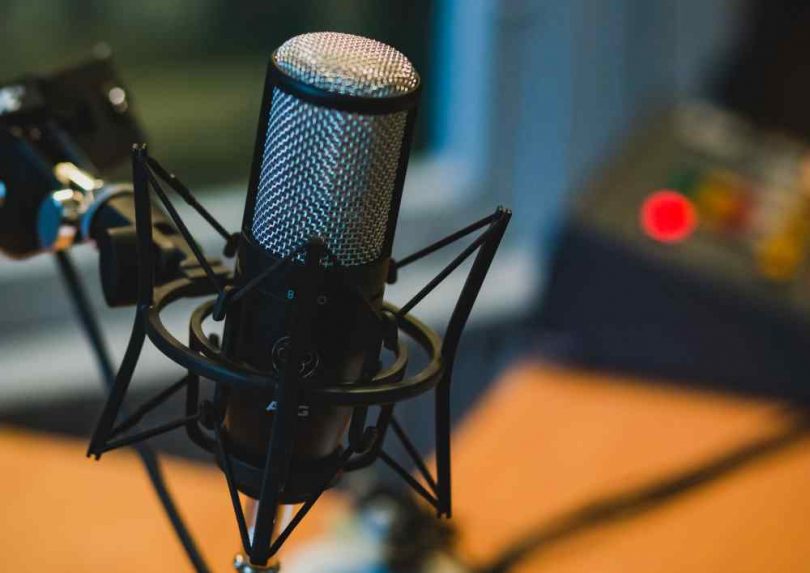Audio media has experienced a huge surge in popularity in the past 10 years.
Podcasts have evolved from being a democratic alternative to radio for a niche community of audio bloggers, to a major part of the modern media landscape.
Research by The Reuters Institute in the Digital News Report 2020 showed a 31% increase in podcast consumption in 20 countries since 2018.
Also, the total number of podcast shows which have been produced to date is over 2 million.

Courtney Carthy. By Fiona McGregor.
Creative director of podcasts at the Mushroom Group, Courtney Carthy, said a main contributing factor to the podcast boom was one change made to the iPhone in 2012.
“The most significant reason that podcasting is as big as it is today is that Apple included the podcast app on the homepage of the iPhone,” he said.
“So, you buy that and then you’ve automatically got the podcast app,” Carthy said.
The global success and mass consumption of podcasts has encouraged a multitude of news organisations to adopt the new medium in order to adapt to a changing digital media landscape and to boost their financial viability.
Podcasts as a form of news distribution have been received well by audiences with research showing news and politics podcasts are listened to the most.
The increased sue of podcasting for news was led by the New York Times in 2017 with a successful daily news podcast ‘The Daily’, a 20-minute report into a single story released each weekday.
The New York’s Daily podcast amassed 100 million streams in less than a year.
This innovation in the news media landscape has proved lucrative for news organisations with many publications globally following the move with their own daily news podcasts.
Ellen Barry, New England Bureau Chief of The New York Times, said news managers at The Times had no idea the podcast was going to have such a global impact.
“We’re in a period where the newspaper is trying all kinds of experiments and this one just took off beyond anyone’s expectations,” Barry said.
More recently, many journalists have moved beyond hard news reports in their podcasts to explore long-form audio storytelling in conjunction with investigative reporting.
‘The Last Voyage of The Pong Su’, a podcast released by The Age and Sydney Morning Herald in 2020, blended journalistic investigation with captivating storytelling in a way that has become popular for news-based podcasts.
The award-winning podcast, reported by Richard Baker, told the previously unheard details of a major Australian legal case from the early 2000s and used a combination of investigative journalism, audio storytelling along with non-traditional news production methods of voice actors, sound design and original music.
The success of podcasts like The Last Voyage of the Pong Su has seen news organisations support producers to tell more new stories in more innovative audio ways.
One such example is from Courtney Carthy who produced a podcast for the Mushroom Group, ‘180 grams’, in 2020.
This documentary podcast series hosted by music journalist Michael Cahill followed the Grammy award-nominated band the Teskey Brothers through the recording of their second studio album Run Home Slow.
“Podcasting allows you to tell a story that creates empathy, that’s complex, that people will share and remember,” Carthy said.
Cathy also credits to the popularity of podcasts to the power of person-to-person transmission.
“People talk when they find a really good podcast. They want to talk about it because they’ve got a deep understanding of the story through the content and they’re able to form an opinion they’ve generated over hours of listening to the content,” he said.
“They want to share it and find somebody else who knows about it, they spend a lot of time talking about it.”
Featured image credit: Communicate Influence








[…] out this story on here to hear my interview with Courtney […]